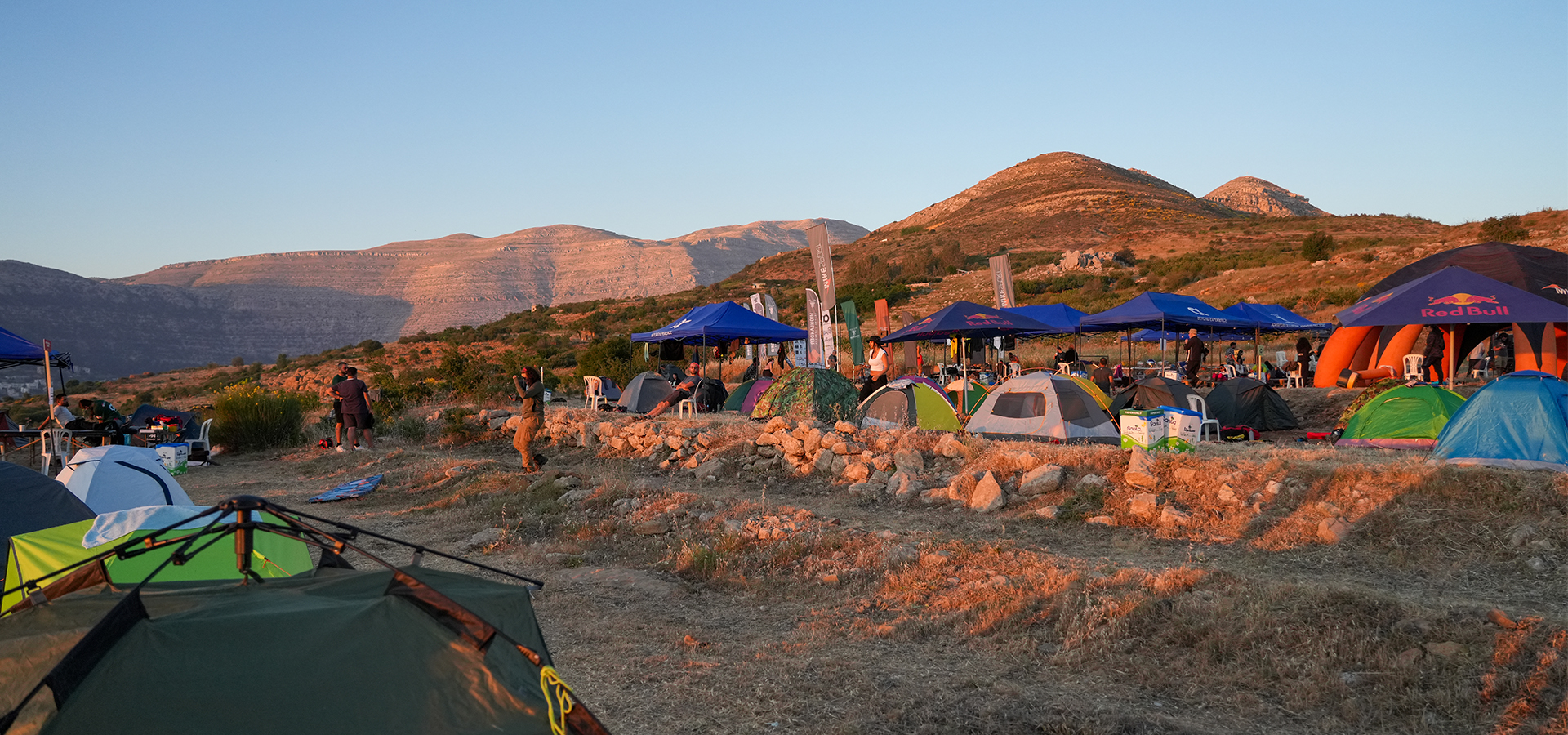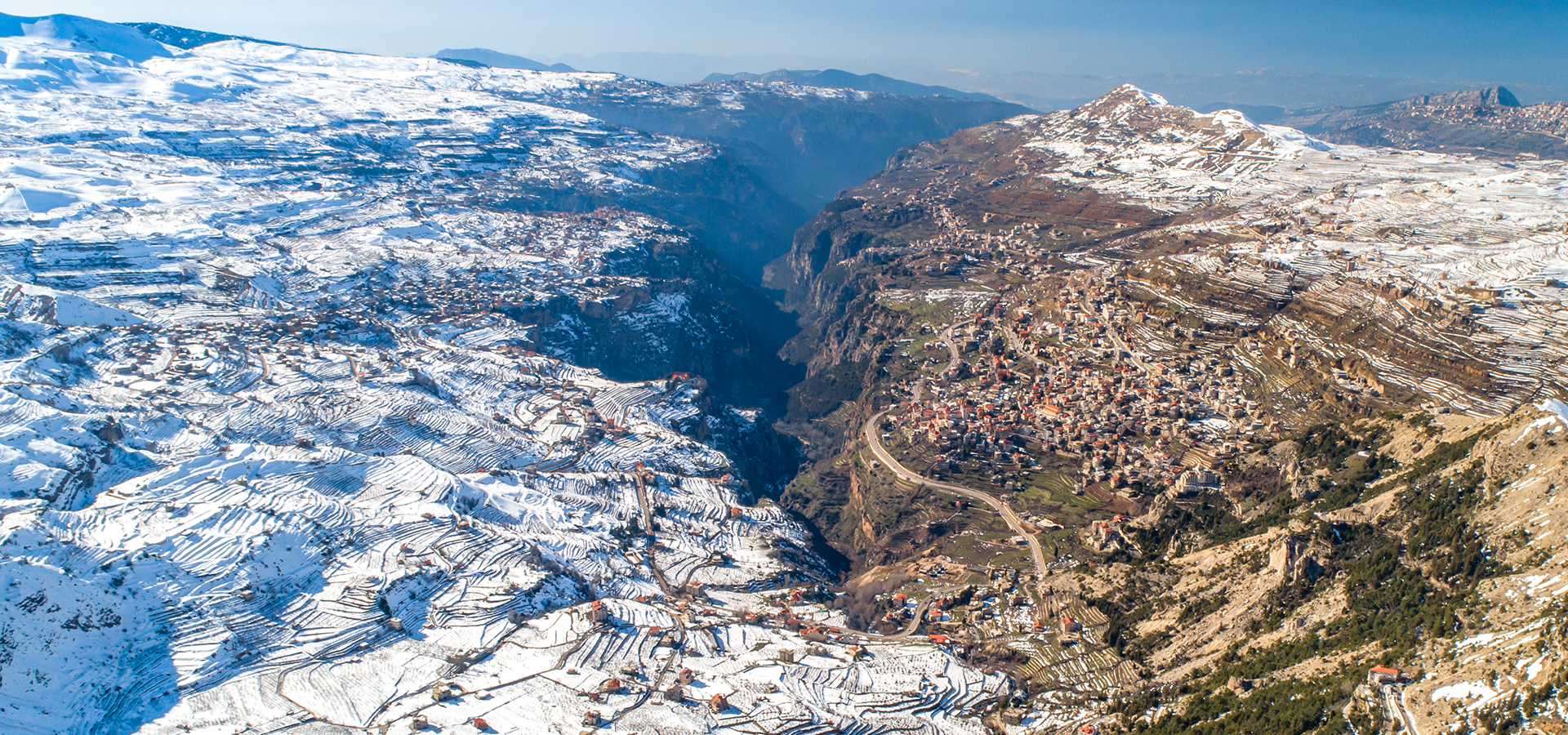
Adret vs Ubac – South face vs North face, What’s the difference?
- July 2, 2020
- 0
Prepared by Elias Saadeh / Lebanon Weather forecast – lwf / Cover photo: Rami Rizk
This great capture taken in North Lebanon represents a perfect example of how the way the slope faces the sun can affect the snow cover found on it, and on a larger scale, creates a micro-climate specific for this area. The difference in the amount, or in other words, the intensity of sunlight received, creates drastic consequences that are not just limited to the snow cover but extend also to the living fauna (animal life) and flora (plant life) present on the slope.
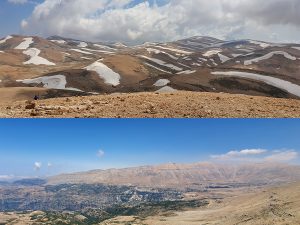
In this epic capture that is considered the best illustration one can see for this phenomenon, we can notice that the slopes of the mountains that are facing North (i.e. the villages on the left – Dimane, Kfarsaroun, Hasroun, Bazaoun, Bqerqasha, BqaqaKafra…) are fully covered in white, whereas the slopes of the mountains facing South (i.e. the villages on the right – Bcharre, Hadchit, Blouza, Bane…) are snow-free, even though there is no significant difference in altitude between the 2 slopes.
In general, in the Northern hemisphere where we live, north-facing slopes ranging in latitude from about 30 to 55 degrees receive less direct sunlight than the south-facing ones (Lebanon is at around 33 degrees latitude). This lack of direct sunlight on the northern-facing slopes slows down the melting of the snow, oppositely to what happens on the southern-facing ones. In fact, the north side of the slopes is often shaded (the area from Dimane to Bqaaqafra shown on the left) whereas the area on the right (from Bcharre towards Bane) receives more solar radiation or intensity since its slope is tilted towards the sun (not shaded).
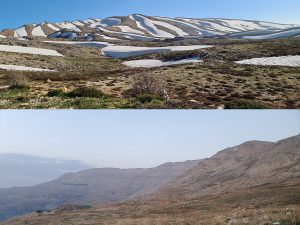
Moreover, it should be mentioned that the south-facing slopes are also more open to the warm winds: this will generally make the micro-climate dominating the slope warmer and drier than the one existing on the northern-facing slopes. A warmer and drier micro-climate will definitely affect directly the vegetation that grows on either side; the northern sides will always be cooler and less dry, which will make these slopes look often greener than the southern ones.
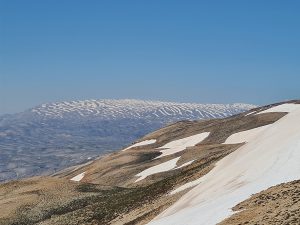
Finally, if we take a look at where ski slopes in Lebanon are located (and definitely worldwide too), or where the spring and summer snow walls last, we will always find them on the northern side of the mountains, since the amount of direct sunlight is lower, creating this cooler micro-climate that helps snow last longer.







